By Rick VanSickle
Donald Ziraldo looks very comfortable sitting at his corner table with a sweeping view of one of the world’s greatest natural wonders on a gorgeous day overlooking the thunderous Horseshoe Falls.
I agreed to meet the co-founder of Inniskillin Wines for a bite to eat at Niagara Park’s newest restaurant and to catch up on his relentless efforts to create a VQA Canada category of wines that would provide a badge of authenticity for all wine regions across the country. More on that later in this post. Much more!

The new Table Rock Bistro and Wine Bar, which opened in May, is the closest you can get to the brink of the iconic Niagara Falls from the vantage point of an open-air rooftop patio where guests can delight in culinary delights crafted from the freshest local ingredients and paired exclusively with VQA Niagara wines.
It’s a stunning view and hard to concentrate on anything else but the roar of the falls, the gentle, cooling mist and the throng of tourists below clamouring for selfies and photos that the 12 million visitors snap every year. We can’t resist playing tourists with a photo of our own from our spectacular perch above the falls.
It was a stroke of genius to create the new bistro from a corner turret at the original Table Rock Centre that is rooted in a history dating back to the early 1800s. Ziraldo played a role in envisioning the bistro, working with Chris Giles, Niagara Parks senior manager for marketing and communications, to create a showcase for exclusively VQA wines and a menu that is a “celebration of Niagara culinary excellence, featuring fresh-made charcuterie, expertly crafted and curated in-house.”
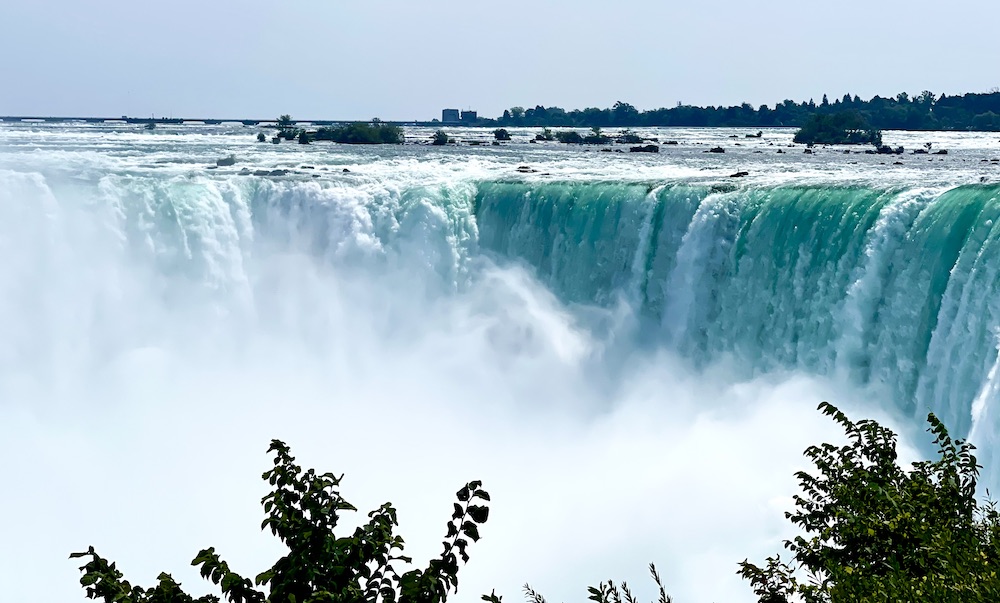
“We have been very fortunate to have Donald Ziraldo’s support throughout the project as a consultant in the development and as a representative of the wine industry, providing his respected voice and perspective in several media opportunities,” Giles tells Wines in Niagara as he joined us on the terrace. “We will be continuing to collaborate with Donald as we further activate the restaurant with wine and culinary focused programming in the future.”
The bistro features over 65 locally made wines, from an ever-expanding 30 Niagara VQA wineries, in addition to products from local breweries and spirits producers. The team has created “strong connections to the local wine industry, with on-site tastings and winery activations during the summer,” said Giles, and has exposed a wide swath of visitors to a wine region many did not even know existed.
“We need to tell the world,” Ziraldo said. “People have no idea there’s a wine region in Niagara, but they find out if they come here.” Giles agrees completely with Ziraldo. “We want to be an education spot, a destination spot that celebrates the region and the wines. We also want to make it a place where locals come as well.”
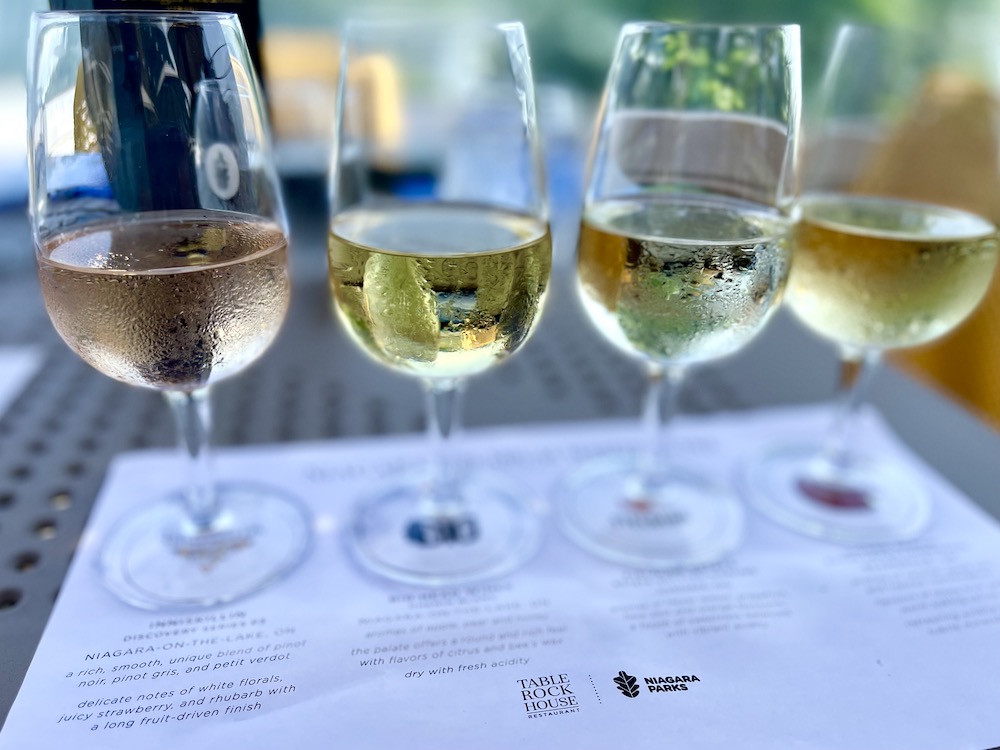
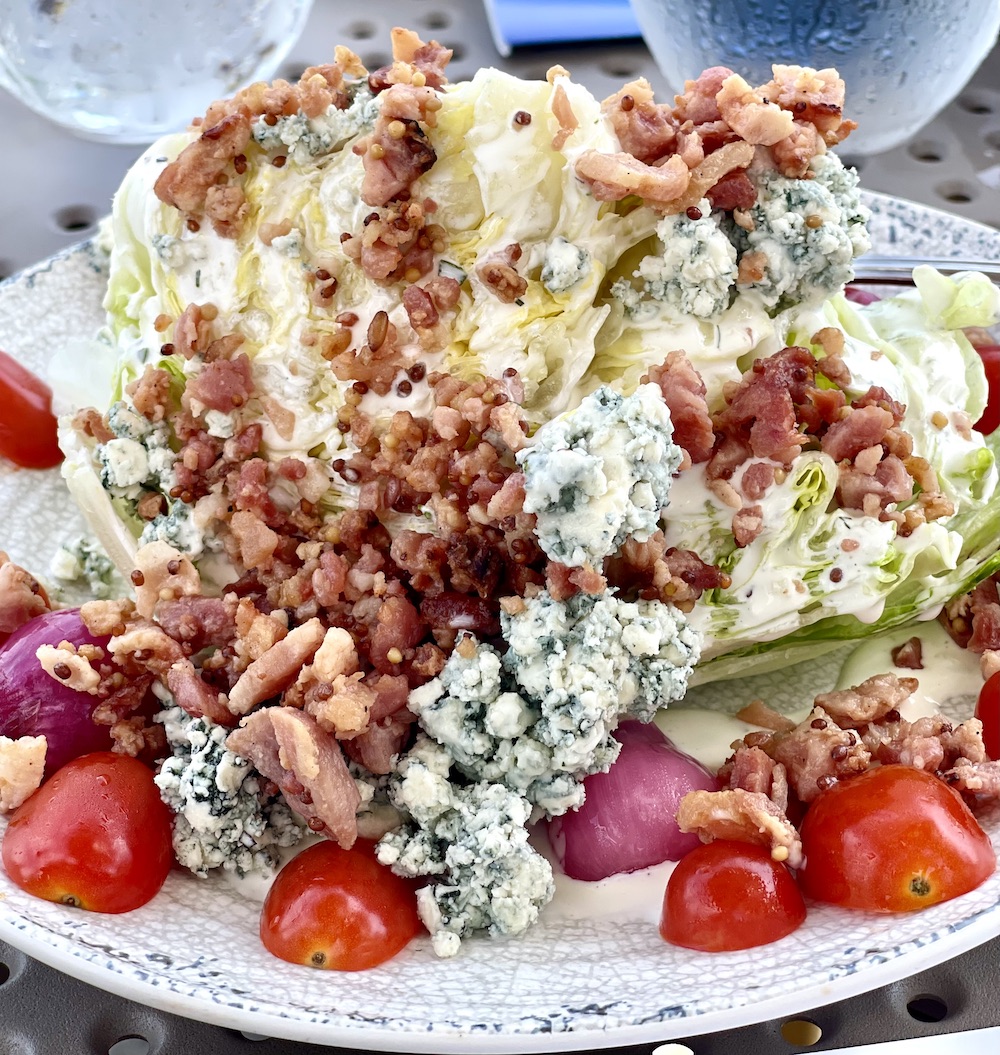
Both Ziraldo and I order a flight of white wines that on this day includes Big Head Chenin Blanc, Fielding Estate Riesling, Hidden Bench Chardonnay and Inniskillin Discovery Series P3. We both pair it with the wedge salad that’s smothered in chunky bacon, crumbled blue cheese, heirloom tomatoes and buttermilk dressing. There were other tasty starters — the Ontario burrata and tuna tataki, plus mains of lobster rolls, caprese panini, and chicken taco bowl, that caught my eye — but we had a lot to talk about, so we went with the “lighter” dish to pair with the white wines in front of us and the conversation to come.
The bistro chefs have designed a menu to complement the wine/drinks list, featuring charcuterie boards with local cheeses, meats and various accoutrements, as well as the starters and main courses above. You can browse the full menu here.
The exclusively Niagara VQA wine list is extensive and really has no limits. If you are a winery and don’t see your wines listed here just contact the bistro, they’d be happy to add you to the list when they can. Most of the wines can be ordered by the glass or bottle and include every style imaginable that is made in Ontario. The menu also features over 20 local beer/cider options, along with 15 Niagara-based spirits and an extensive craft cocktail list. There is also a “take away” store inside the bistro where you can purchase bottles to take home and enjoy later.
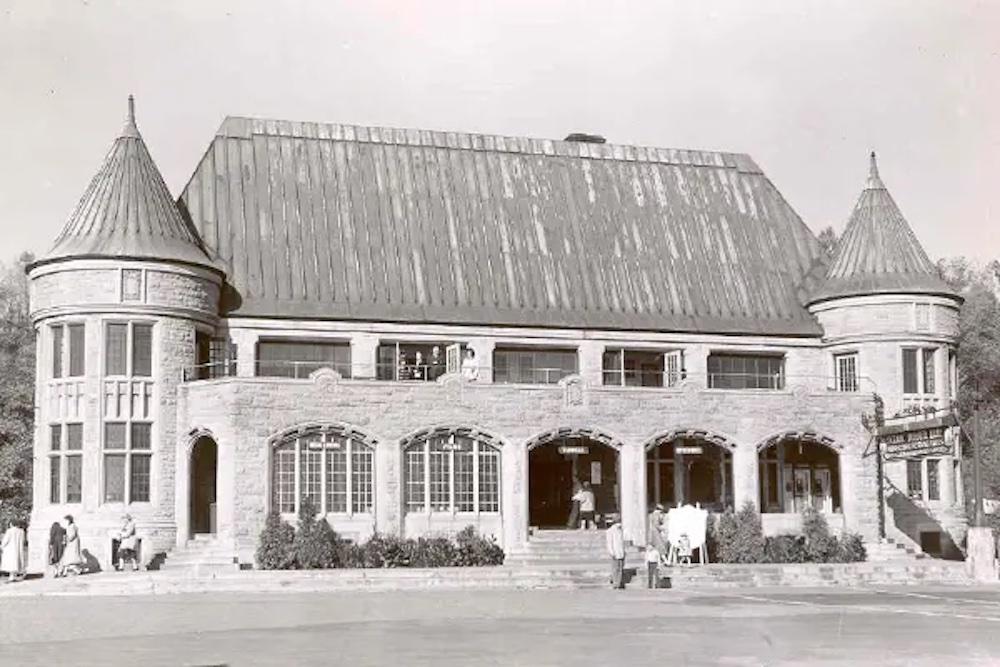
Table Rock is named for a large, flat slab of rock that jutted from the top of the gorge wall overlooking the falls, that partially collapsed in 1818, with continuous deterioration of both notable and significant portions occurring throughout the 1800s.
In 1827, local industrialist Thomas Barnett built the first Table Rock Museum approximately 100 metres south of the “table rock” site (with an accompanying staircase for visitors to get to the base of the Horseshoe Falls). Seeing commercial opportunity, several other regional businesspeople attempted staked claim in the vicinity of “table rock.”
In 1925, an open competition was held for the design of a new Table Rock House with the architectural firm of Findlay and Foulis chosen as the winner. Construction on the new facility began later that year south of the existing building and even closer to the Horseshoe Falls. The new building was much grander in scale and included amenities like food service and dressing rooms for the scenic tunnels attraction (now Journey Behind the Falls) in addition to serving as a station for the electric railway.
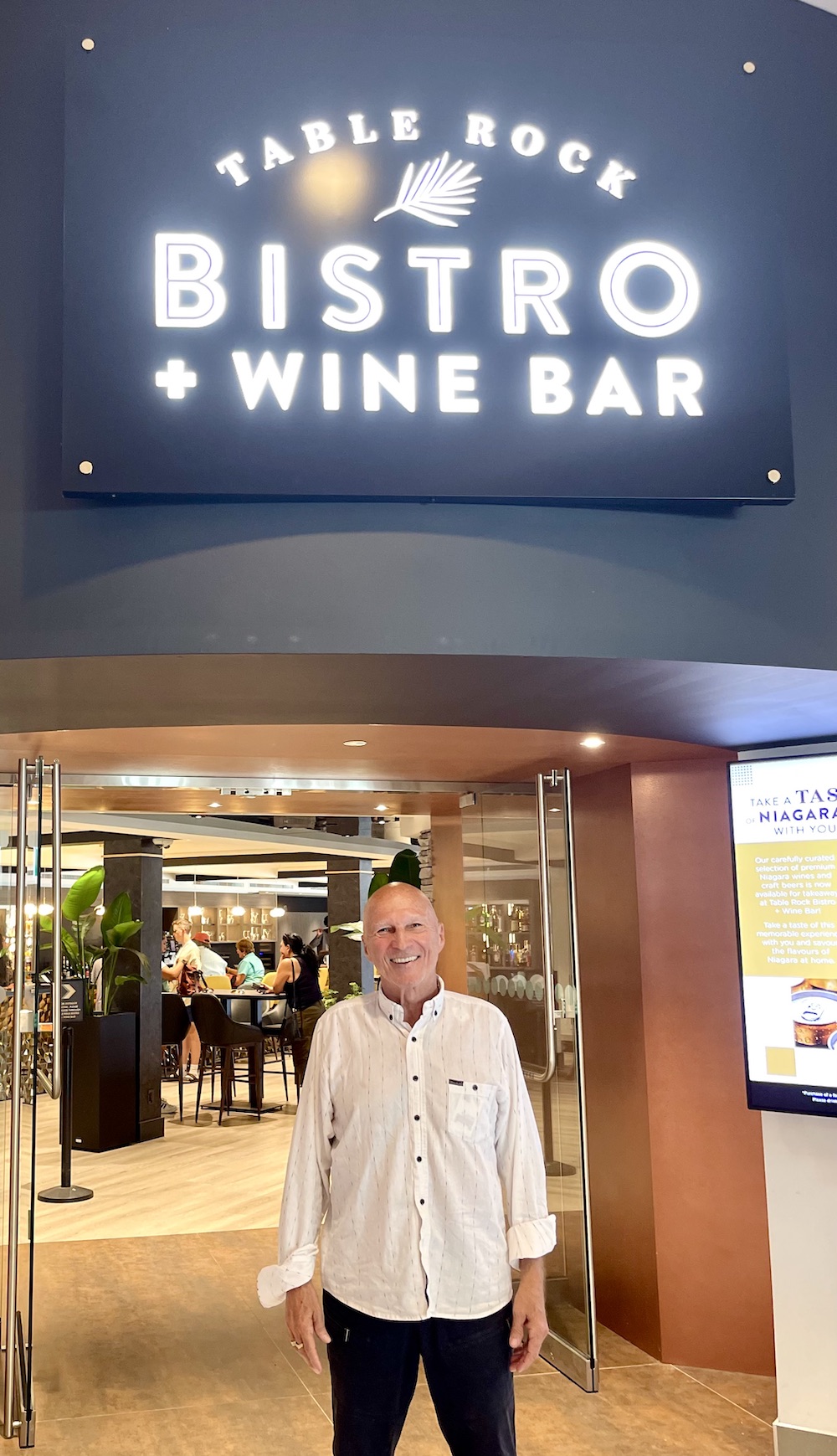
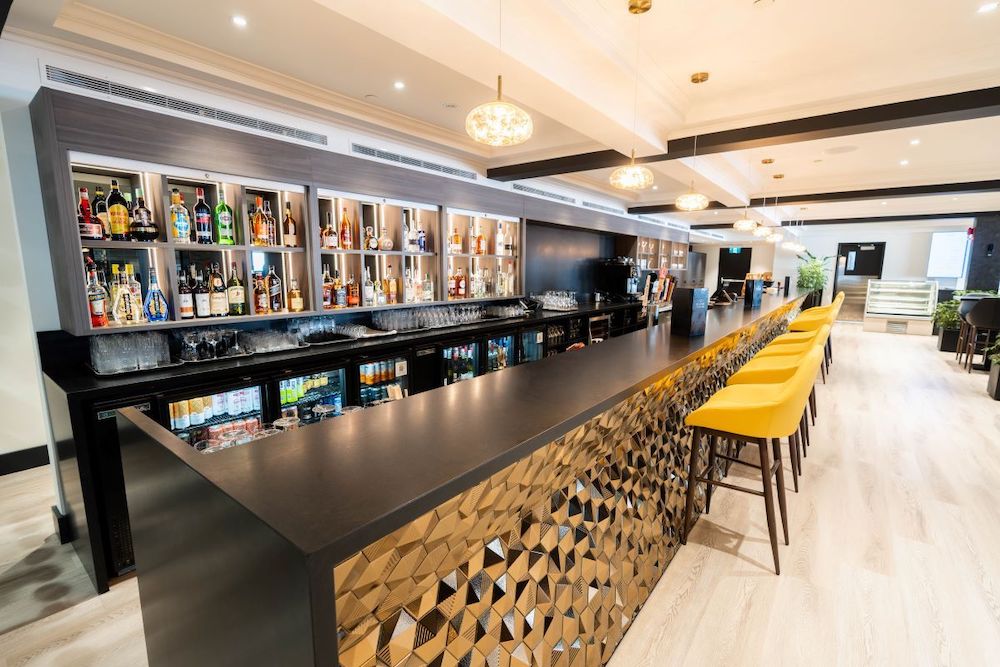
Over the next century, numerous major renovations and additions to the site took place. Expansion of the facility in 1963 added additional retail space, while another in 1972 saw the road relocated to run along the west side of the building, creating a much larger pedestrian plaza at the brink of the falls. In 1974 the building then known as Table Rock South was constructed featuring a larger dining facility (now the site of Table Rock House Restaurant) offering a panoramic view of the falls via floor to ceiling windows.
The Table Rock Bistro, with renovations completed in May, is the newest showcase in an evolving and historic piece of history that helps tourists and locals alike enjoy the falls in a whole new light.
Which brings us to …
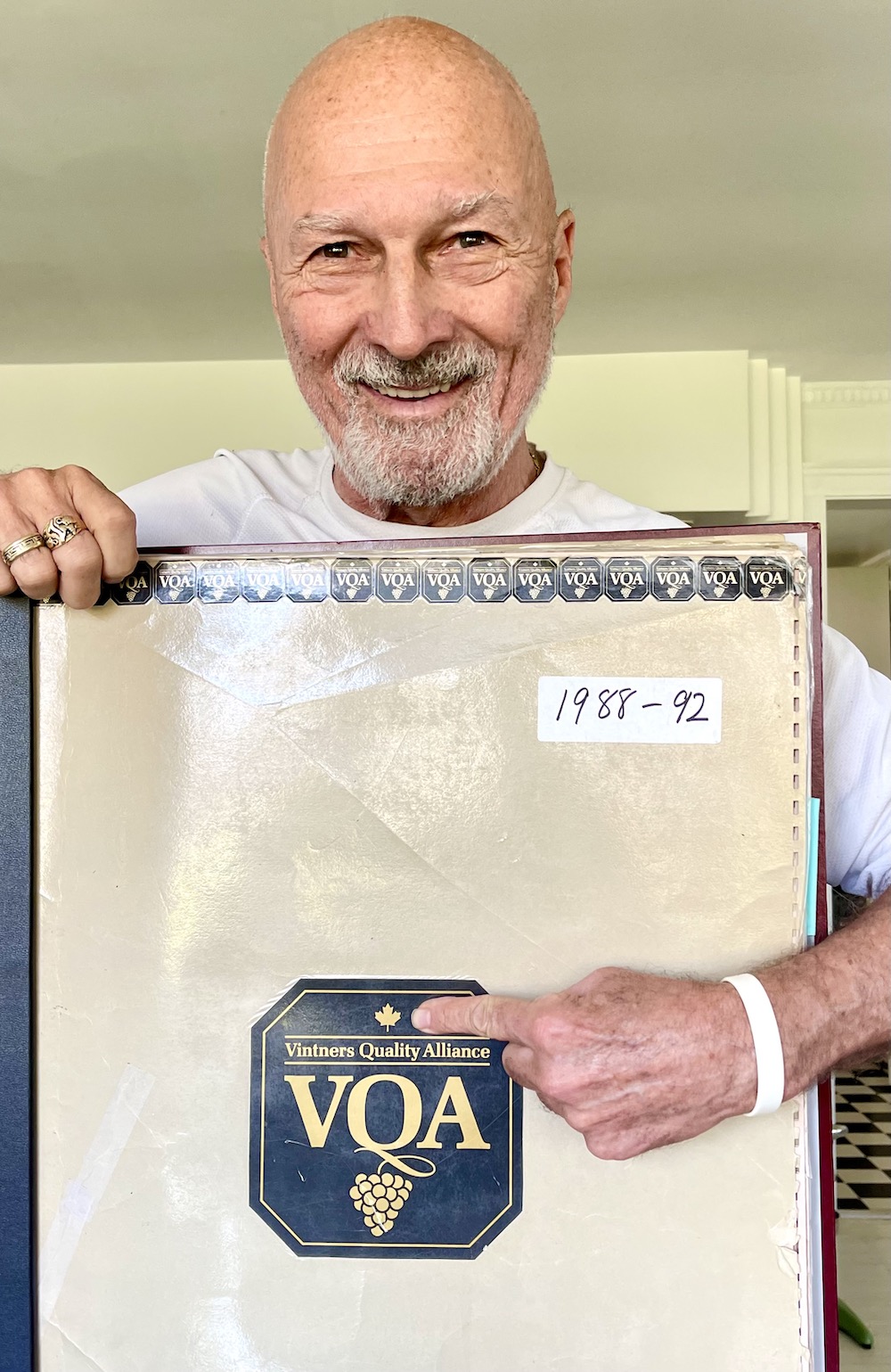
It’s of no surprise that Ziraldo would lend his expertise to the Table Rock Bistro and Wine Bar featuring local VQA wines, after all, he was at the forefront of the modern wine industry in Ontario when he and partner Karl Kaiser founded Inniskillin Estate Winery in 1975. He hasn’t stopped promoting 100% Ontario wines, selflessly, for the last 50 years.
Ziraldo’s latest challenge is a familiar one — the establishment of VQA Canada. He was there when VQA was finally launched as a voluntary organization in Ontario in 1988. He was there as the first chair when a set of standards was agreed on with the goal of elevating the quality of Canadian wines, and providing quality assurances to the consumer at home and abroad. And he was there on June 29, 2000, when the Vintners Quality Alliance Act, 1999 was proclaimed by the Robert W. Runciman, then Ontario Minister of Consumer and Commercial Relations.
What many people did not know at the time was VQA was never envisioned as a provincial authority for wine quality and authenticity. Ziraldo and the initial working group fought to make it a federal authority, much like France’s AOC (Appellation d’Origine Contrôlée), to be the over-arching authority with sub-appellations in Ontario, B.C., Nova Scotia, and Quebec — the main wine regions in Canada at the time. In the end, both the B.C. and Ontario governments at the time made VQA a provincial jurisdiction.
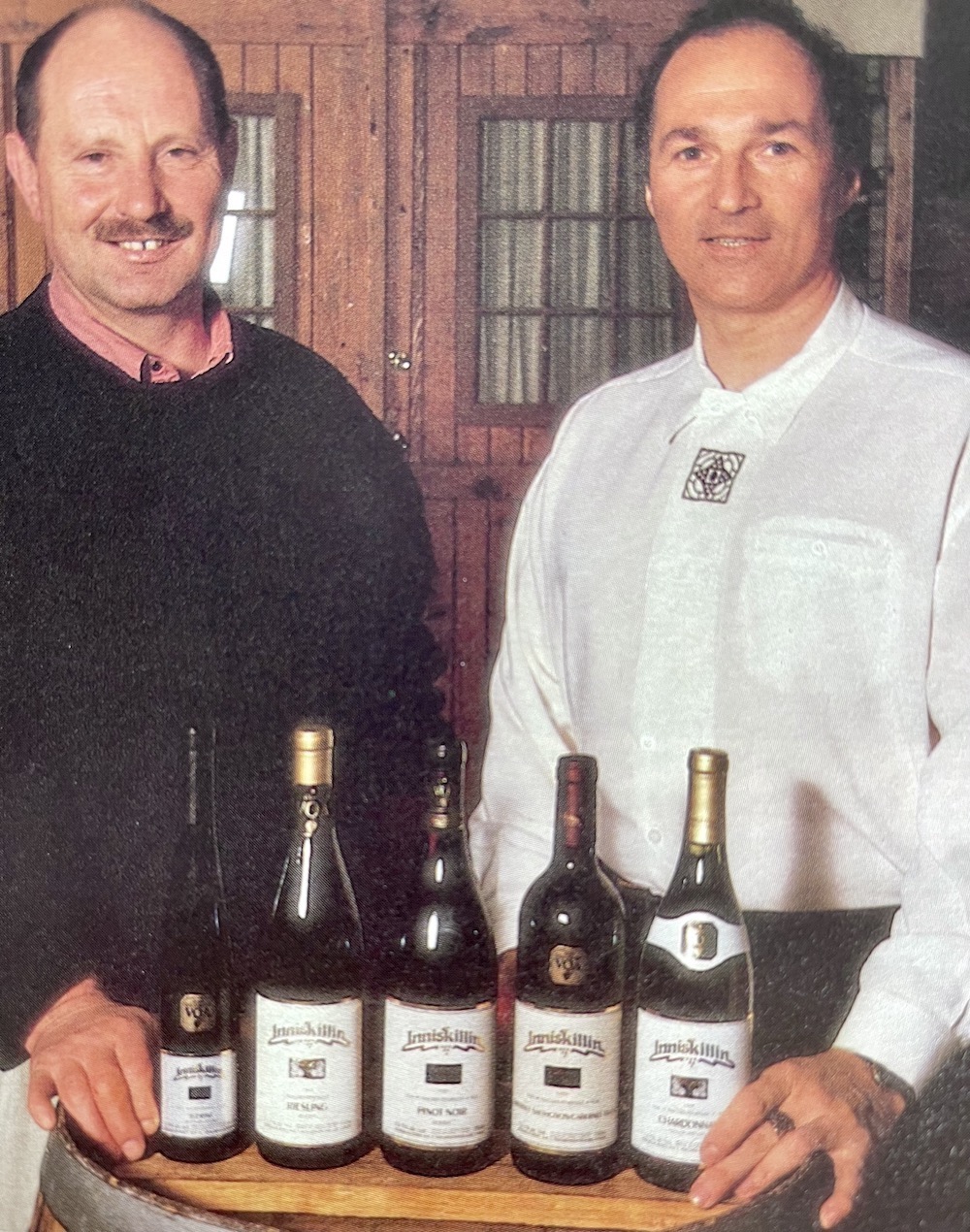
With B.C. dealing with a catastrophic loss of grapes in 2023 after back-to-back bad winters and Ontario, mainly Niagara, now dealing with a back-to-back oversupply of grapes, it seemed logical that one region that needs grapes could help the other that had too many grapes. But it’s not that simple, as it turns out.
The idea for VQA Canada being resurrected stemmed from a meeting last February between concerned Niagara grape growers, Ontario Grape Growers chief executive Debbie Zimmerman, and Ziraldo at his home in Niagara-on-the-Lake. While the topic of helping B.C. wineries recover from the loss of vines was foremost on the minds of growers at the meeting, Ziraldo had a higher purpose and floated the VQA Canada idea — again.

Bringing back the notion of a VQA Canada authority was borne out of concern for what is happening right now in B.C. and what could very well occur in Ontario, Nova Scotia, or Quebec with one bad winter, one widespread attack of red blotch or leaf roll disease, or anything else that looms large over the industry.
Ziraldo says the back-to-back cold episodes in B.C. is “an opportunity to get VQA Canada back on the table; it’s an opportunity to get VQA across the country.”
So Ziraldo championed the idea, hit some dead ends and missed the opportunity to help B.C. wineries with the current vintage, but has not given up on VQA Canada as he works behind the scenes to bring it to fruition.
One bright spot has been interest from the federal government, in particular with the minister of agriculture and agri-food, Lawrence MacAulay. At a meeting in June on Parliament Hill with MacAulay, Helena Jaczek (MP for Markham-Stouffville), Joyce Murray (MP for Vancouver Quadra), Vance Badawey (MP for Niagara Centre), Ziraldo, Dan Paszkowski (CEO of Wine Growers of Canada) and John Baldwin (president of Vignoble du PicBois in Quebec), all agreed to undertake a study to consider the establishment of VQA Canada as a category across Canada in all retail outlets.
Condensed notes from Ziraldo, who was at the meeting:
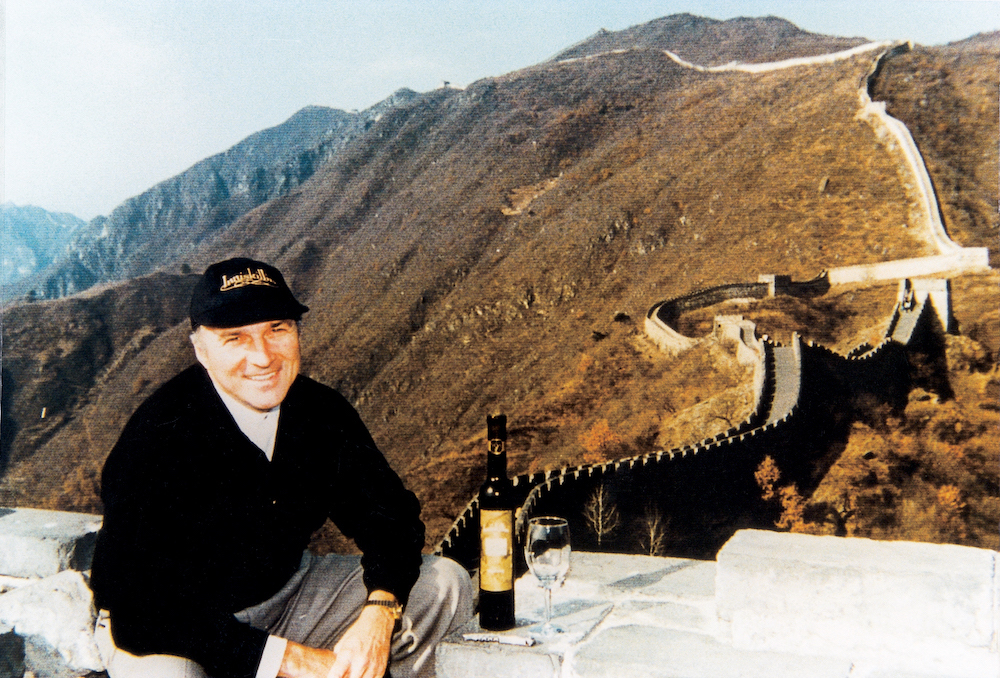
• I had the opportunity of being the founding chair of VQA which was intended to be Canadian Appellation of Origin “VQA Canada” from the beginning. Emulating established wine appellations such as the AOC in France, the DOC in Italy, and many others;
• The VQA initiative was started by a small volunteer winery committee, and eventually after 10 years, was legislated first in Ontario in 1988 and then in British Columbia in 1990 but has not yet achieved nationwide status;
• I have created a retail planogram which clearly creates the opportunity to expand awareness of VQA Canada across all retail outlets and liquor boards (including SAQ) nationwide;
• Inter-provincial trade barriers are the elephant in the room;
• We need to look to the future, not only for consumers in Canada, but to strengthen the vintners of Canada’s position in the global market.”
Condensed notes from Dan Paszkowski, also at the meeting:

• As the owner of the VQA certification mark, WGC has engaged discussions with industry representatives as well as the Ontario Wine Appellation Authority (OWAA) and the British Columbia Wine Authority (BCWA) on fast-tracking a certified multi-province “VQA Canada” appellation for use in Ontario and British Columbia.
British Columbia wineries can currently access Ontario wine for sale in BC as follows:
• Ontario bulk wine shipped to B.C. where it is packaged and clearly labelled as “Product of Canada,” under federal labelling regulations;
• Ontario bulk wine shipped to B.C. where it is blended with B.C. wine, packaged and labelled as “Product of Canada,” under federal labelling regulations;
• VQA Ontario approved wines (100% Ontario) finished and bottled in Ontario and shipped to a B.C. labelled with a BC winery brand — This would have to be processed through an Ontario winery, comply with Ontario VQA rules and include “VQA Ontario” or the appropriate Ontario appellation on the label. For example, “Quails Gate Chardonnay (VQA Niagara Peninsula VQA).”
What is currently not available in Canada is a multi-province “VQA Canada” certification, which would:
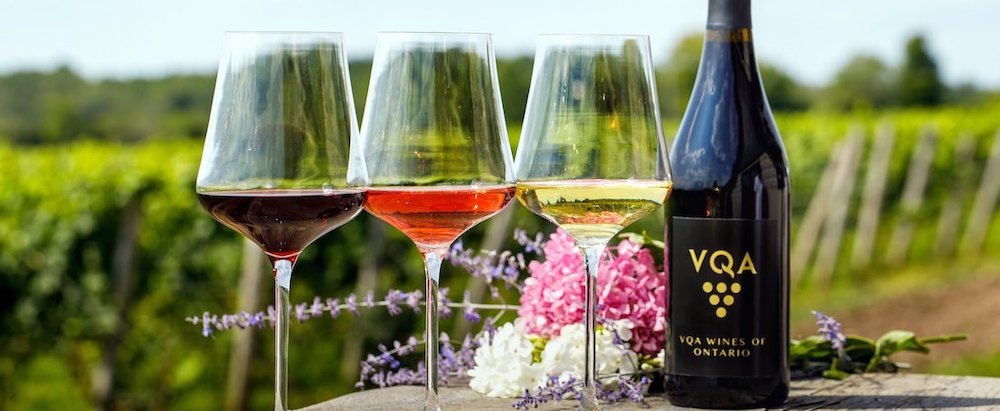
• Help address the multi-year grape and wine shortage in British Columbia;
• Provide a market for surplus VQA quality wine;
• Provide a future short crop alternative for Ontario wineries; and, protect the future of the VQA brand.
The creation of voluntary “VQA Canada” designation requires the approval of the provincial governments in Ontario and British Columbia, as well as the support of the provincial wine authorities:
• Ensures that the products using “VQA Canada” meet the standards and certification requirements of the provincial wine authority in the province they are produced;
• Upholds the quality standards defined for the “VQA Canada” mark and requires that the mark is only used in association with Canadian wine of origin made from 100% Canadian grown grapes;
• “VQA Canada” designation conforms to the laws and regulations governing the composition, method of manufacture, and designation of wines in the province of production.
The proposed certification process for “VQA Canada” wines would adhere to the following draft process:
• Provincial VQA wine authority certifies origin and composition of bulk wine for sale to ON/BC as VQA eligible, including volume and composition broken down by appellation, vintage, grape variety and brix. This certification could be provided either directly to the purchasing winery or to BCWA/OWAA as a verification tool;
The receiving winery in ON/BC produces a multi-province blend under the existing provincial laws/regulations where the blend is produced (e.g., labelling, testing etc.);
• OWAA and BCWA have confirmed that any reference to provincially regulated appellation terms on “VQA Canada” wines would unlikely be permitted, since they do not qualify for use of the term(s) unless approved by the provincial wine authority;
• OWAA and BCWA are open to discuss any desire to allow appellation components to be declared (e.g., 75% Ontario/ 25% BC or 50% Niagara/ 50% Okanagan) should the “VQA Canada” designation move forward;
• OWAA and BCWA wine authority would ensure that the blended multi-province wine meets all VQA requirements within the province in which the wine is blended and packaged, prior to certifying the wine as “VQA Canada.”
VQA Canada Path Forward:
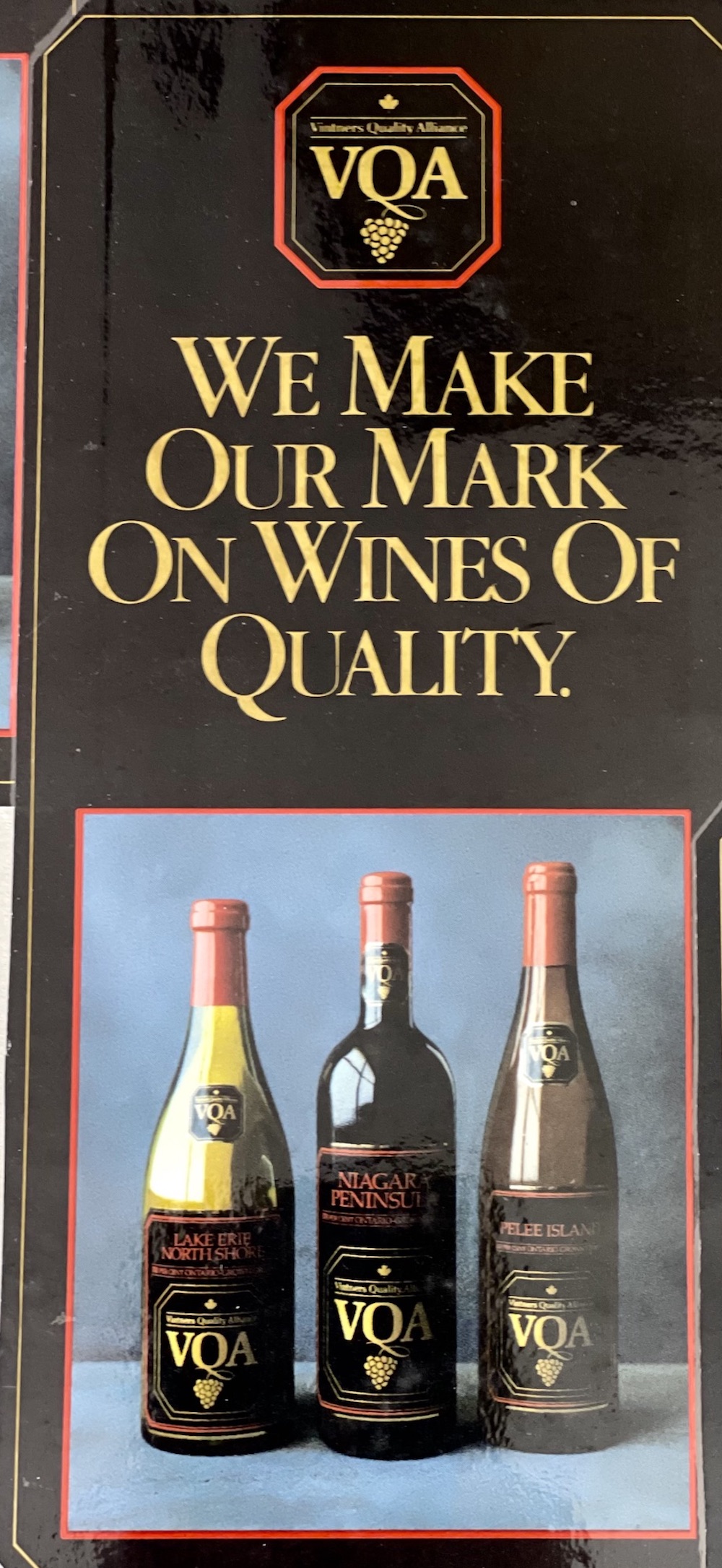
• WGC has applied for the VQA Canada TM application which will take 12-18 months for approval;
• Both OWAA and BCWA have engaged discussions with their respective Board/Advisory Committee’s to discuss and approve “VQA Canada” approval process, the rules and standards to which the “VQA Canada” certification mark is intended, and the required regulatory amendments to allow for the use of “VQA Canada” in BC and ON;
• Pending direction from OWAA and BCWA, the hope is to achieve both industry and provincial government support to fast-track the required provincial regulatory amendments to create a “VQA Canada” designation;
• Request that Minister MacAuley engage discussion with his provincial counterparts in British Columbia and Ontario to support the creation of “VQA Canada,” which would not only support the use of surplus VQA eligible bulk wines available in Canada, prior to purchasing any additional grapes or finished wines from the U.S.
National wine standards — original industry objectives for negotiating a national wine standard (NWS):
• Create a national Appellation of Origin system to protect terms for use on wines produced in Canada (origin, wine styles, etc.);
• Federal enforcement of the VQA system;
• Federal minimum standard for content and quality assurance for appellation wines;
• Improved labelling to ensure clarity, consistency and integrity – confidence in VQA;
• Prevent the export of fraudulent Icewine;
• Cost effective system to ensure competitiveness;
• Recognition of existing provincial standards that meet or exceed national wine standard;
Reasons for failure of the national wine standards process:
• Non-VQA wines (Quebec and Nova Scotia) felt marginalized by VQA Wine category;
• Legal structure for federal-provincial delegation of authority provisions were unacceptable;
• Costly NWS administration (CFIA cost recovery for winery inspections, audits …);
• Concerns with the use of VQA to describe systems that may represent different standards and levels of regulation;
• Jurisdictional issues around the enforceability of existing provincial standards that exceed national wine standard;
• Concerns with the varietal list;
• Restriction of use for certain terms (e.g., Icewine) to VQA wines;
Progress since termination of National Wine Standards Process:
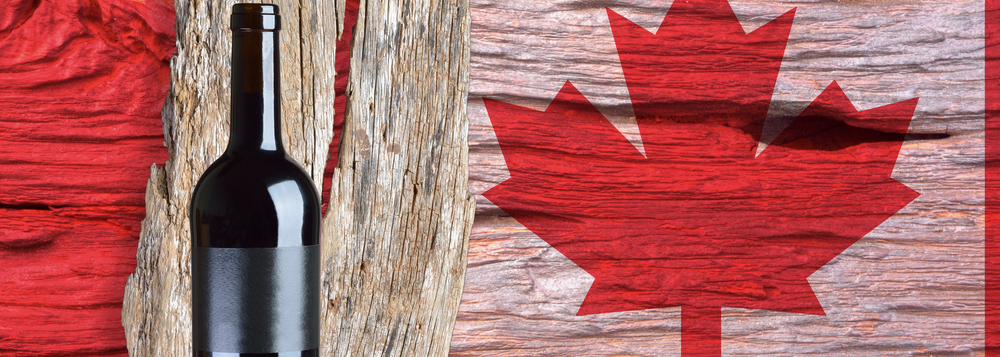
• Federal approval and signatory to Phase II World Wine Trade Group Labelling Agreement (2013);
• Alcohol Tolerance: ±1.0% from what is the ABV on the label;
• Vintage: At least 85% of wine content must be from the labelled vintage date;
• Single Region: 75% of content must come from the claimed region but permits an importing country to require at least 85% of the wine to be obtained from grapes grown in the named region if the region is recognized by the exporting party to be a single delimited grape growing region;
• Multi Region: At least 85% of the wine content must be obtained in the named regions;
• Single Variety: At least 75% varietal content must come from the single labelled varietal, except in Canada where it is 85%;
• Multi Variety: At least 85% of varietal content must come from the labelled varietals in descending order;
• Completion of a federal definition of Icewine (2014);
• Creation of Nova Scotia Wine Standards (2015);
• Creation of Quebec Wine Standards (2018) “Vin de Quebec”;
• Completion of “International Domestic Blends” as a country of origin statement for wines blended in Canada (2018);
• Nova Scotia Wine Authority Act Royal Assent (2022);
•Funding for the creation of the Nova Scotia Wine Authority (2023) to establish, administer and enforce an appellation of origin system known as the Nova Scotia Quality Wine Standards Certification Program;
• Approval of Quebec and Nova Scotia as competent authorities under CETA;
• Inclusion of WWTG Labelling text in CUSMA, CPTPP and future agreements;
Benefits of the above progress in support of national and regional identity standards include:
• Minimum wine standard and credible labelling system across Canada
• Improved system of appellation control
• Integrity of the provincial appellation marks (VQA, BCVQA, QC and NS)
• Recognition and flexibility for new wine regions and varietals
• Improved export/import controls
• Advanced progress for identity labelling standards in international trade obligations – CETA, CUSMA, CPTPP, WWTG agreements
Motion for Standing Committee on Agriculture Given that:
1) Wine producing nations in Europe have established national appellation quality assurance designations such as Appellation d’Origine Contrôlée (“AOC”) in France, Denominazione di Origine Controllata (“DOC”) in Italy and Qualitätswein mit Prädikat (“QmP”) in Germany;
2) in Canada, provinces have established their own quality assurance designations such as Vintners Quality Alliance (“VQA”) Ontario, VQA BC and Protected Geographical Indication or Indication Géographique Protégée Vin du Québec, and studies have shown that such designations have sales and marketing benefits for the wines which qualify, and economic benefits for the wine producers who make VQA qualifying wines;
3) current severe product shortages in BC may require product transferred from elsewhere in Canada;
4) Canadian wines have limited export sales;
5) there are administrative, financial, communications and consumer benefits to the VQA designation being available on a national basis.
Therefore, I move that the Committee undertake a study to consider the establishment of VQA Canada as a category across Canada in all retail outlets.
Conclusions, work to be done

Sitting at Ziraldo’s corner table at the Table Rock Bistro, legions of curious tourists climbing the stairs to the Bistro to take a quick selfie or two from our vantage point, I can see the exasperation on his face as he charts the progress and laments the many steps yet to come.
He told me earlier this year that “if I don’t do this, who is going to do it?” I didn’t quite know what he meant by that back then. It seemed like a no-brainer, a simple overarching badge of authenticity that signals to consumers across the country and the world, for that matter, that the Canadian wine they are drinking comes from grapes grown where they say they are.
That seems so simple, yet all these months later, Ziraldo is still kicking the ball down the road, putting in the considerable time and effort it’s going to take to get it done. Meanwhile, he watches as B.C. wineries struggle to keep their wineries going in the face of widespread loss of vineyards. So many B.C. wineries have turned to Washington for grapes, as opposed to Ontario, citing the cost to get it there and a taste profile more aligned with B.C.
From Ziraldo’s point of view, one that comes from a genuine love of the Canadian grape and wine industry that he had a very big hand in creating, he can’t understand why B.C. wineries would turn to Washington for grapes and “put 37% market share (for B.C. VQA wines) at risk and lose that shelf space?”
There is a healthy dose of optimism to go with the slow pace of change on the VQA Canada front. Ziraldo’s efforts and those of the others noted above, have made it to a bureaucratic level where VQA Canada actually has a shot at making it to the finish line. With partners now working in Ontario, Quebec, Nova Scotia and B.C., there is buy-in on many fronts. Ziraldo is not alone in this battle anymore and, if I were a betting man, I would take the wager that this gets done despite the odds. Hope springs eternal.


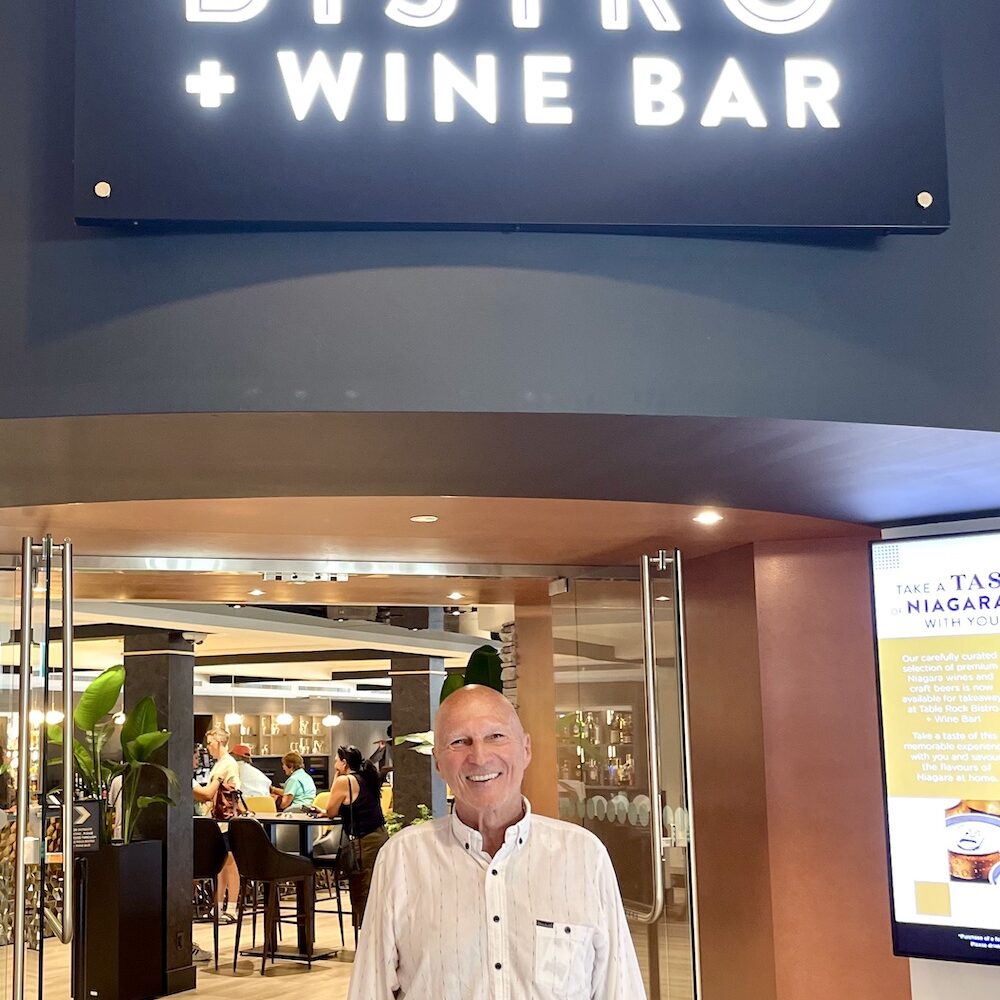






A number of years ago, when I was writing a wine column for the Ottawa Citizen, I called for the end of VQA as it was then constituted. I argued that the name was unintelligible to many people, and that the Q was misleading because too many VQA wines were poor quality. At that time, VQA panels were not certifying some fine wines for reason of ‘typicity’. That criterion, thankfully, has been abandoned, but I’m still not enamoured of VQA and I’m not in favour of it being extended across Canada unless it’s in a radically different form.
My Citizen column, by the way, attracted a lot of consumer support and some opposition, but what surprised me was how many people in the Ontario wine industry, including people who had sat on VQA panels, supported radical reform or abandonment altogether. (To a person, they asked for their names not to be identified.) Even today, a sizeable percentage of wineries (generally small producers) in Ontario and BC don’t submit their wines for VQA certification, and many others tell me they do so only because some licensees prefer to list VQA wines.
That said, I have a number of thoughts on this article:
If a national appellation of origin system is adopted, there’s an opportunity to rebrand with a name that mentions wine and Canada. I’m not going to suggest any, but even a boring ‘Wine of Canada’ would be better than the convoluted Vintners Quality Alliance. More on the ‘Quality’ bit later. (Note that to many wine professionals, ‘vintner’ means ‘wine merchant’.)
To compare a future Canadian VQA to French AOC, Italian DOC, etc. is misleading. Based on these models, a VQA Canada would not have ‘sub-appellations in BC, Ontario, Quebec’ etc., as suggested here. On the AOC model, all current VQA appellations and sub-appellations would be appellations in their own right. So there would be a VQA Okanagan Valley and a VQA Naramata Bench, just as there’s an AOC Bordeaux and an AOC St. Julien. In a truly national Canadian system, there needn’t be a reference to province, although there could be, just as California AVA wines can carry the AVA name and ‘California’ — although hardly any do.
Rather than look to Europe for models, why not look to the rest of the world? After all, VQA ON and VQA BC are already more similar to Australia, New Zealand, South Africa, etc. in the sense that they don’t restrict grape varieties for use in appellation-designated wines to nearly the same extent as AOC, DOC, etc. do.
The other reason I suggest looking to so-called New World wine laws is that they certify provenance, varieties/blends, alcohol, etc., but not quality. I suspect this is a sticking point with supporters of VQA Canada, because the core of VQA is the Q. That was understandable in the 1980s when Canadian wine quality was poor across the board. But that’s absolutely not the case now, and it’s time to abandon the defensive posture. Let an appellation authority certify the basic parameters of wines, and let the market judge quality.
Another thing that bothers me about this VQA Canada proposal is that it’s clearly driven by grape shortages and surpluses — the idea that there should be a simple way for Ontario to ship unsold VQA wine to BC for bottling alone or blending. This conjures up the awful story of domestic-international blends that have blighted the reputation of Ontario wines for decades. So many consumers still think, despite better signage in the LCBO, that these blends are ‘Ontario wines’ because they’re labelled with Ontario winery names.
There’s absolutely nothing wrong with blending wines from anywhere in the world as long as the result is good. Penfolds successfully blends Australian and US wines, and Inniskillin’s East-West blends are good — although Centre-West would be accurate, unless you pretend Quebec and the Atlantic provinces don’t exist. But inter-regional blending would have to be far more transparent than it was/is with international-domestic blends.
And after trying to sell the idea that, say, VQA Ontario wines have a ‘sense of place’, the idea is to blend them with VQA BC wines and sell them as what? Wine with a ‘sense of places’? I’m no fan of the idea of terroir as it’s widely used today, so I don’t care about any imaginary sense of place, but the industry should get its messaging straight if it plans interprovincial blends.
And then there’s another issue that’s seldom mentioned: every wine professional (winery principals, writers, etc.) in BC I’ve ever asked is adamant that there’s very little interest in Ontario wines there — in fact, some antipathy towards the style of Ontario wines. In contrast, there’s a lot of interest among Ontario consumers in BC wines. I suspect the likelihood of a huge imbalance — far more Ontarians buying BC wine than vice versa — lies behind the Ontario government’s refusal to allow direct consumer purchases from BC wineries. Maybe that’s also part of the decision by some BC wineries to buy from the North-West US rather than Ontario to make up the grape shortage.
Overall, if the main thrust of this idea is to shift unsellable bulk VQA Ontario wine to BC, why not just look at a mechanism to achieve that, rather than create a new national superstructure?
As for the prospects of a VQA Canada, I’m not optimistic. Each province has its own regulations, and past attempts to harmonize or integrate them failed. One of the sticking points was permitted varieties, and that should be less of a problem now that hybrids and PIWIs are more widely accepted everywhere. But I can see no interest on the part of the Quebec industry, which has successfully adopted IGP Vin du Québec certification, in joining a pan-Canadian wine authority.
There would also need to be provision for wines not certified by any national wine standard. How would they be labelled? We need to get away from the monopoly that the VQAs have on all kinds of words and names that effectively hamstring independent producers.
Don’t get me wrong. I’m in favour of Canada’s having a national wine law. But let’s do it right, and start from scratch. Let’s think about what we want it to achieve and how that’s best done given the structure of the Canadian wine industry. Retrofitting an existing regulatory regime that might have made sense 40 years ago but now has so many shortcomings is not the way to go.
Thanks for this, Rod. You make some great points. — Rick
Rick & Rod, excellent, thoughtful responses. Of course, there should be a national appellation for 100% Canadian wine. But there will never be one until we have free trade between provinces. We have Free Trade with the US and Mexico but not between Canadian provinces. Ludicrous.